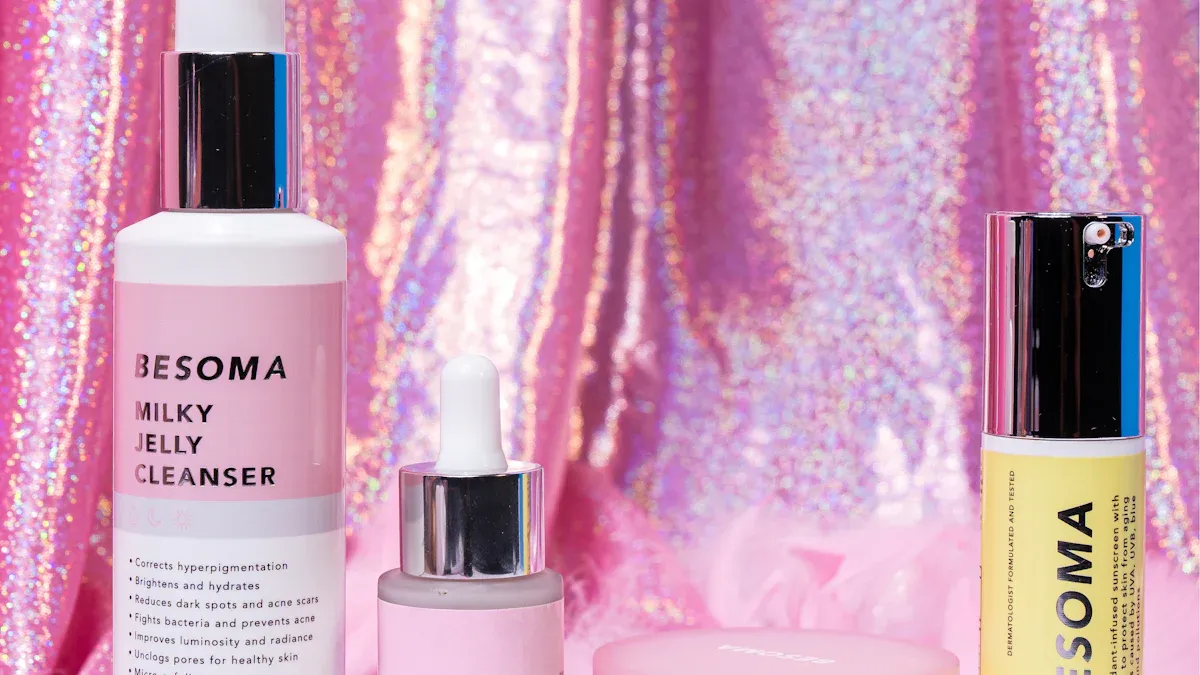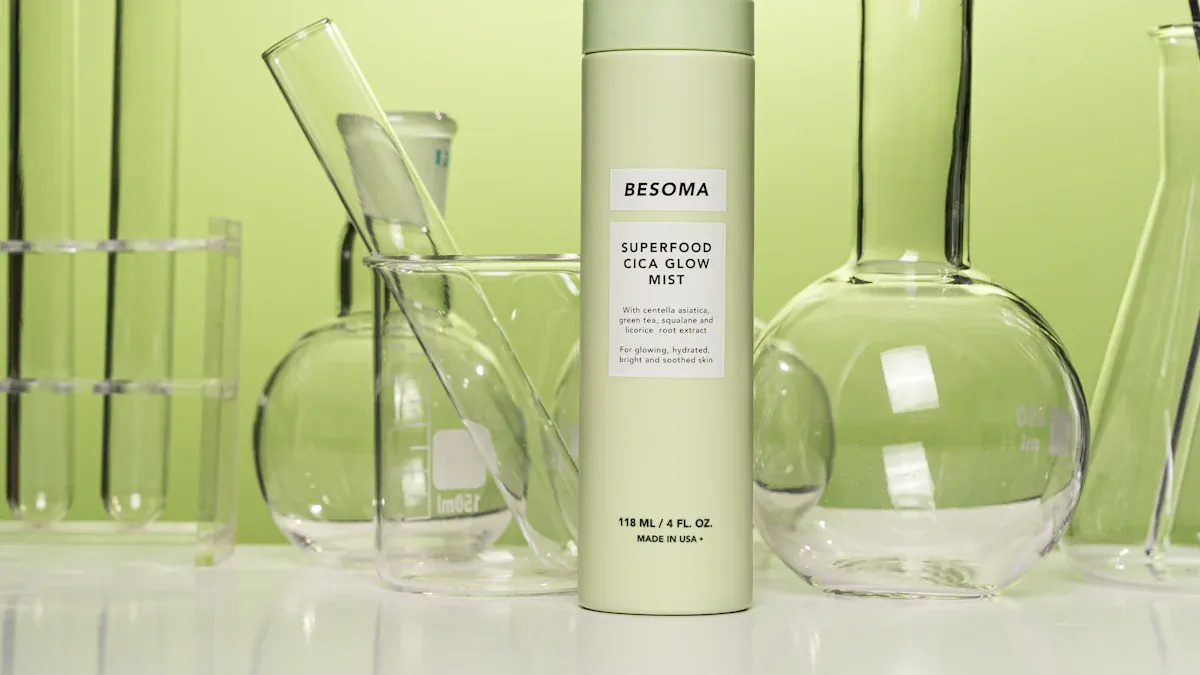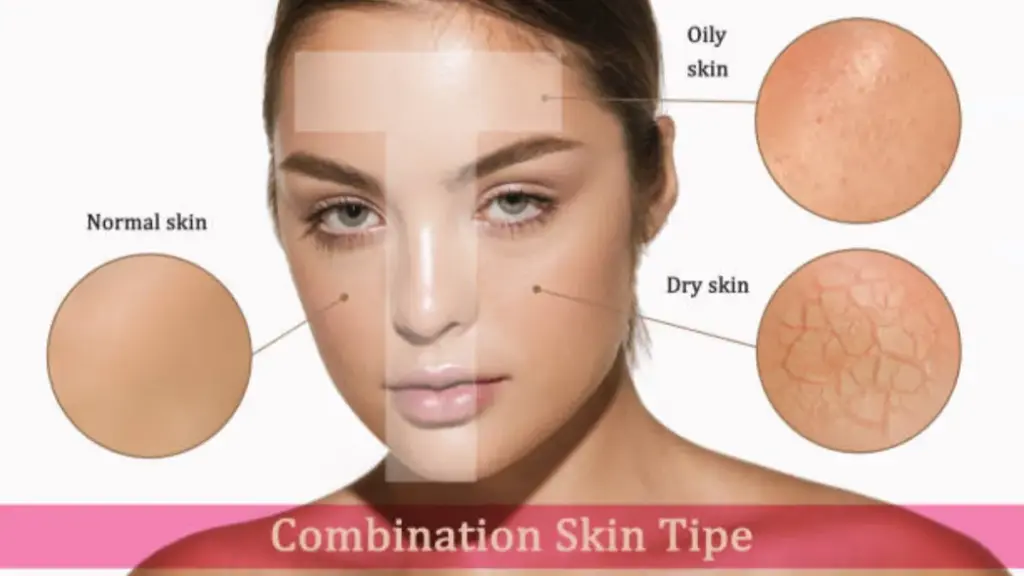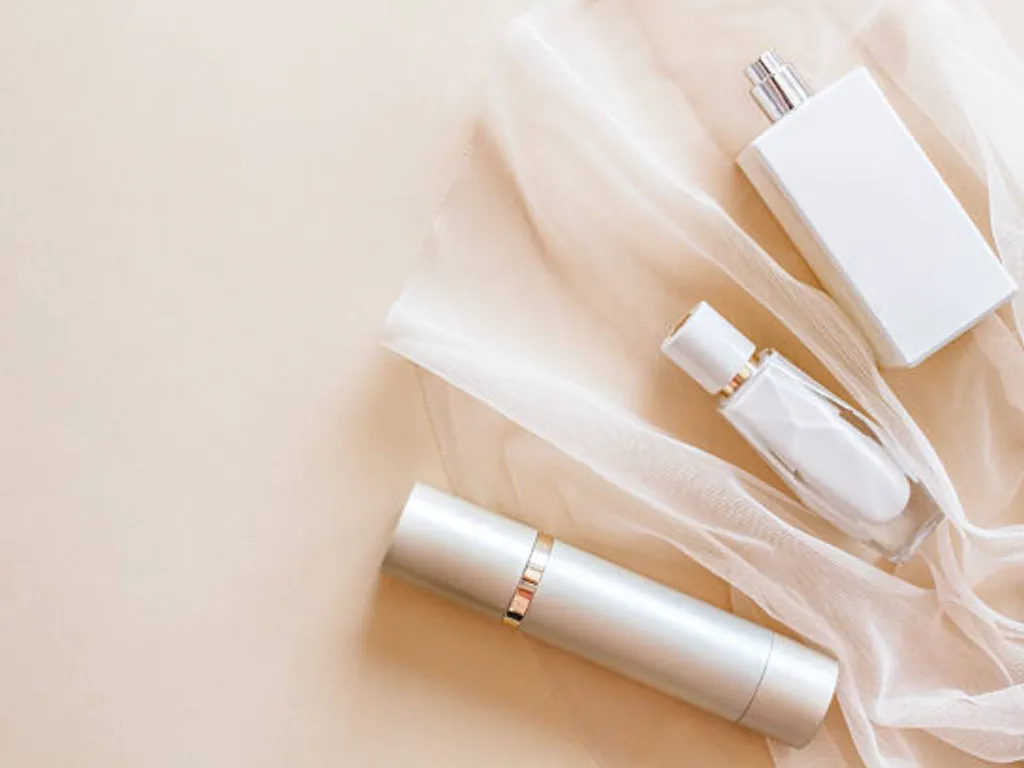스킨 케어 라인을 시작하는 데 드는 비용을 고려할 때, 총 투자는 개인 레이블을 선택하는지 여부에 따라 다릅니다., 관습, 또는 유기농 제품. 스킨 케어 라인을 시작하는 데 얼마나 많은 비용이 소요되는지 완전히 이해하려면, 제품 수와 같은 요소를 평가해야합니다., 귀하의 비즈니스 규모, 그리고 당신이 선택한 비즈니스 모델. 개인 라벨로 스킨 케어 라인을 시작하는 것은 일반적으로 더 저렴합니다., 커스텀 라인에는 더 많은 리소스가 필요합니다. 개인 레이블 옵션 또는 전체 사용자 정의 개발을 고려하든, 이 안내서는 오늘날 성공적인 스킨 케어 브랜드를 구축하는 데 실제로 비용이 드는 것입니다..
스킨 케어 라인을 시작하는 평균 비용

스킨 케어 라인을 시작하는 데 드는 비용이 얼마인지 물어 보면, 몇 가지 요인을 살펴 봐야합니다. 피부 관리 라인을 시작하는 평균 비용 2025 범위 $2,000 에게 $30,000. 대부분의 새로운 브랜드는간에 지출합니다 $9,000 그리고 $20,000 세 가지 제품을 출시합니다. 일부 기업가들은 그대로 시작했습니다 $300, 그러나 귀하의 실제 투자는 귀하의 선택에 달려 있습니다.
비용을 낮게 유지하려면, 개인 레이블 모델을 선택할 수 있습니다. 이 접근법은 사전 형성 제품을 사용합니다, 연구 개발 비용을 줄입니다. 맞춤형 공식은 독특한 레시피에 대한 비용을 지불하기 때문에 더 많은 투자가 필요합니다., 테스트, 및 인증. 유기농 라인은 프리미엄 성분 및 인증 수수료로 인해 더 많은 비용이 듭니다..
10 피부 관리 라인을 시작하는 비용에 영향을 미치는 주요 요인 2025

이 섹션에서, 우리는 10 브랜드를 출시하기 전에 고려해야 할 가장 중요한 비용 요소는 스마트를 계획 할 수 있습니다., 숨겨진 비용을 피하십시오, 첫날부터 지속 가능한 사업을 구축하십시오.
1. 제조 모델
선택한 제조 모델은 시작 비용을 결정하는 데 중요한 역할을합니다.. 개인 레이블 (또는 화이트 라벨) 사전 형성 제품 중에서 선택할 수 있습니다, 포장을 사용자 정의하십시오, 비교적 낮은 투자로 신속하게 출시됩니다. 하지만, 이 공식은 독점적이지 않으며 제한된 차별화를 제공합니다. 대조적으로, OEM 또는 ODM을 사용하면 고유 한 제형을 개발할 수 있습니다, 브랜딩, 그리고 포장. 이것은 더 큰 제어 및 시장 포지셔닝을 제공합니다, R에 대한 비용이 더 높습니다&디, 테스트, 그리고 더 큰 MOQ. 귀하의 선택은 예산에 따라야합니다, 타임 라인, 장기 브랜드 비전.
2. 제조업체 선택 및 위치
파트너가있는 제조업체는 제품 비용에 직접 영향을 미칩니다, 리드 타임, 그리고 확장 성. 평판이 좋은 제조업체와의 작업은 일관된 품질 및 규제 준수를 보장합니다., 그러나 그들의 가격은 경험에 따라 다를 수 있습니다, 용량, 서비스 범위. 위치 또한 아시아의 제조업체 (예를 들어, 중국, 대한민국) 종종 더 경쟁력있는 가격을 제공합니다, 유럽이나 미국에있는 동안. 지역 규정에 더 잘 조정하고 특정 시장의 배송 시간을 단축 할 수 있습니다.. 또한, 커뮤니케이션 장벽과 같은 숨겨진 비용, 시간대 지연, 또는 물류 문제는 운영 효율성과 결론에 영향을 줄 수 있습니다..
3. 제품 제형 및 r&d 복잡성
맞춤형 공식을 만들고자하는 경우, 더 높은 선불 비용을 준비하십시오. 기본 제형 일반적인 활성 성분과 간단한 질감을 사용합니다 (예를 들어, 클렌저 또는 토너) 비교적 저렴합니다. 그러나 일단 당신은 고급 행동을 탐구하면, 천연 성분, 또는 피부과 전문의가 지원하는 성분, 아르 자형&안정성 테스트로 인해 D 비용이 빠르게 증가합니다, 효능 평가, 반복적 인 제형. 일부 실험실은 SKU 당 공식 수수료를 청구 할 수 있습니다, 다른 사람들은이를 전체 제조 비용으로 묶습니다. 게다가, 성분 소싱, 안전 데이터 검토, 성능 테스트는 개발 시간과 예산을 더욱 증가시킵니다, 특히 혁신 또는 기능적 주장이 관련된 경우.
4. 규제 준수 및 테스트 요구 사항
법적으로 스킨 케어 제품을 판매하기 전에, 특히 국제적으로, 규제 준수가 필수적입니다. 미국에서, 자발적 FDA 등록 및 기본 제품 안전 테스트가 충분할 수 있습니다.. 그러나 EU와 같은 시장의 경우, 영국, 또는 중동, 공식적인 안전 평가가 필요합니다, 미용 제품 안전 보고서 (CPSR), 미생물 테스트, 및 CPNP 또는 SCNP 포털 등록. 또한, "노화 방지"또는 "여드름 처리"와 같은 모든 제품은 효능 및 안정성 테스트가 필요할 수 있습니다., 비용이 추가됩니다. 제품 당 수백에서 수천 달러를 할당 할 것으로 예상됩니다., 분포 계획 및 공식 복잡성에 따라.

5. 포장 및 라벨링 디자인
포장은 브랜드 인식에 영향을 줄뿐만 아니라 비용 구조에 크게 기여합니다.. 재고 포장 - 이용 가능한 병, 항아리, 또는 튜브-예산 친화적이며 소규모 달리기에 적합합니다. 대조적으로, 맞춤형 포장 (예를 들어, 독특한 모양, 무광택 마감, 또는 포일 된 세부 사항) 곰팡이 수수료가 높고 리드 시간이 길어집니다. 라벨링 규정을 잊지 마십시오-제품에는 inci 호환 성분 목록이 포함되어야합니다, 순 중량, 배치 번호, 전 세계적으로 판매되는 경우 번역. 또한 응집력있는 경우 그래픽 디자인에 투자하거나 전문가를 고용해야합니다., 대상 고객과 일치하는 고급 비주얼 브랜딩.
6. MOQ 및 생산량
MOQ 요구 사항은 제조업체와 개인 레이블 또는 사용자 정의 개발을 선택하는지 여부에 따라 크게 다릅니다.. MOQ가 높을수록 단위당 비용을 줄이지 만 더 많은 선불 자본과 더 큰 저장 공간이 필요합니다.. 낮은 MOQ, 신제품을 테스트하거나 틈새 시장에 입력하는 데 더 유연하지만, 종종 더 높은 단가와 제한된 사용자 정의가 제공됩니다. 올바른 균형을 찾는 것이 중요합니다. 너무 작아서 마진이 고통 스럽습니다., 너무 커서 현금 흐름 문제 또는 판매되지 않은 재고 위험. 개인 라벨 스킨 케어 제조업체와 파트너십을 맺기 전에, 출시 중에 생산 지연 및 예기치 않은 비용을 피하기 위해 MOQ 유연성을 조기에 논의하는 것이 중요합니다..
7. 브랜딩 및 초기 마케팅
강력한 브랜딩은 경쟁력있는 시장에서 스킨 케어 라인을 차별화합니다.. 전문 로고 디자인을위한 예산, 색상 팔레트 개발, 브랜드 메시지는 필수적입니다, 특히 프리미엄 또는 틈새 대상을 목표로하는 경우. 시각적 정체성을 넘어서, 초기 마케팅 지출을 계획해야합니다, 소셜 미디어 컨텐츠 포함, 인플 루 언서 협력, PR 봉사, 유료 광고, 및 샘플링 캠페인. 이 비용은 수백에서 수천 달러에이를 수 있습니다., 마케팅 전략에 따라.
8. 전자 상거래, 분포, 물류 설정
온라인 판매에는 단순한 제품 이상이 필요합니다. 신뢰할 수있는 인프라를 구축하는 것이 포함됩니다.. 여기에는 전자 상거래 웹 사이트 개발이 포함됩니다, 결제 게이트웨이 설정, 주문 이행 관리, 그리고 처리 반품. 집에서 배송하든, 현지 창고를 사용하십시오, 또는 타사 물류와 파트너 관계를 맺습니다 (3Pl) 공급자, 각 옵션에는 관련 비용이 있습니다. 국제 배송은 또한 관세를 도입합니다, 큰 통, 및 포장 제약. 분포 모델-디렉터-소비자, 소매, 또는 하이브리드 - 물류 복잡성과 관련 비용을 형성 할 것입니다. 처음부터 작업을 계획하면 확장 할 때 병목 현상과 비용이 많이 드는 오류를 방지 할 수 있습니다..
9. 재고 관리 및 저장 비용
재고 관리는 제품 저장에 관한 것이 아니라 폐기물을 피하는 것입니다., 스톡 아웃, 현금 흐름 문제. 볼륨에 따라, 저장 공간을 임대해야 할 수도 있습니다, 기후 제어 환경에 대한 비용, 또는 성취 센터와 협력하십시오. 부적절한 재고 회전 또는 과잉 생산은 만료되거나 세분물이없는 제품으로 이어질 수 있습니다., 특히 더 짧은 선반 수명이있는 공식의 경우. 재고 추적을위한 소프트웨어 도구, 재주문 경고, 배치 제어에는 월간 구독이 필요할 수도 있습니다. 시작 브랜드의 경우, 마른 애자일 인벤토리 전략을 유지하면 시장 수요에 반응하는 동안 비용을 낮추는 데 도움이 될 수 있습니다..
10. 고객 서비스 및 사후 판매 인프라
안정적인 고객 지원은 브랜드와 함께 증가하는 숨겨진 비용입니다.. 이메일 지원을 제공합니다, 라이브 채팅, 반환 처리, FAQ 페이지는 신뢰를 구축하고 반복 구매를 장려합니다. 국제적으로 판매하는 경우, 다국어 지원 및 지역별 반환 정책도 필요할 수 있습니다.. 시간이 지남에 따라, CRM 도구가 필요할 수 있습니다, 자동화 된 워크 플로, 또는 아웃소싱 서비스 제공 업체. 종종 간과되었지만, 판매 후 서비스는 고객 만족도에 직접적인 영향을 미칩니다, 리뷰, 브랜드 충성도 - 선택적 비용보다는 전략적 투자를 제공합니다..
Smart를 시작하는 방법: 최초 창립자를위한 비용 절감 팁

당신의 시작 스킨 케어 라인 스마트 계획과 효율성에 중점을 두어야합니다. 일반적인 함정을 피하는 데 도움이되는 입증 된 전략에 따라 스킨 케어 비즈니스 시작 비용을 줄일 수 있습니다..
철저한 시장 조사로 시작하십시오. 고객이 원하는 것을 이해하면, 당신은 판매하지 않는 제품에 돈을 쓰지 않습니다..
최소 실행 가능한 제품을 개발하십시오 (MVP). 전체 제품 라인에 투자하기 전에 작은 배치로 아이디어를 테스트하십시오.. 이 접근법을 사용하면 피드백을 수집하고 신속하게 조정할 수 있습니다.
제공하는 계약 제조업체와 협력하십시오 개인 라벨링. 소규모 배치 생산을 협상합니다. 이 단계는 스킨 케어 사업 시작 비용을 줄이고 위험을 낮추게합니다..
특정 작업을 위해 프리랜서 또는 컨설턴트를 고용하십시오. 처음에는 풀 타임 직원을 고용하지 않음으로써 돈을 절약합니다..
저렴한 선택을 선택하십시오, 둘 이상의 목적을 달성하는 현지 성분. 이 선택은 공식을 단순화하여 스킨 케어 사업을 시작하는 비용을 줄일 수 있습니다..
소규모 포커스 그룹으로 제품을 테스트하십시오. DIY 테스트는 타사 실험실의 높은 가격없이 귀중한 통찰력을 제공합니다..
팁: 비즈니스 이름과 브랜딩에 일찍 투자하십시오. 강력한 정체성은 고객을 끌어 들이고 신뢰를 구축합니다, 첫 번째 판매 전에도.
oully가 비용 효율적인 개인 라벨 스킨 케어 라인을 시작하는 방법

Oully에서, 우리는 스킨 케어 브랜드 출시의 과제, 특히 품질을 손상시키지 않고 비용을 관리 할 때. 오버 10 수년간의 산업 경험, 우리는 신생 기업과 신흥 브랜드가 효율적으로 비전을 생생하게 가져 오는 데 도움이됩니다.. 우리의 GMP 인증 공장은 유연한 MOQ를 제공합니다, 입증 된 제형, 개발 시간과 투자를 줄이기위한 풀 서비스 OEM/ODM 지원. 개인 레이블 라인으로 시작하든 사용자 정의 공식이 필요한지 여부, 우리 팀은 포장 및 준수에서 생산 및 배송에 이르기까지 모든 단계를 안내합니다.. 또한 시설을 방문하고 비용 효율적인 정밀도로 아이디어를 시장에 적합한 제품으로 바꾸는 방법을 확인합니다..
스킨 케어 브랜드를 생생하게 할 준비가되었습니다? 오늘 저희에게 연락하십시오 무료 상담을 요청합니다, 견적을 받으십시오, 또는 샘플 컬렉션을 탐색하십시오. 위대한 것을 만들어 봅시다.
















